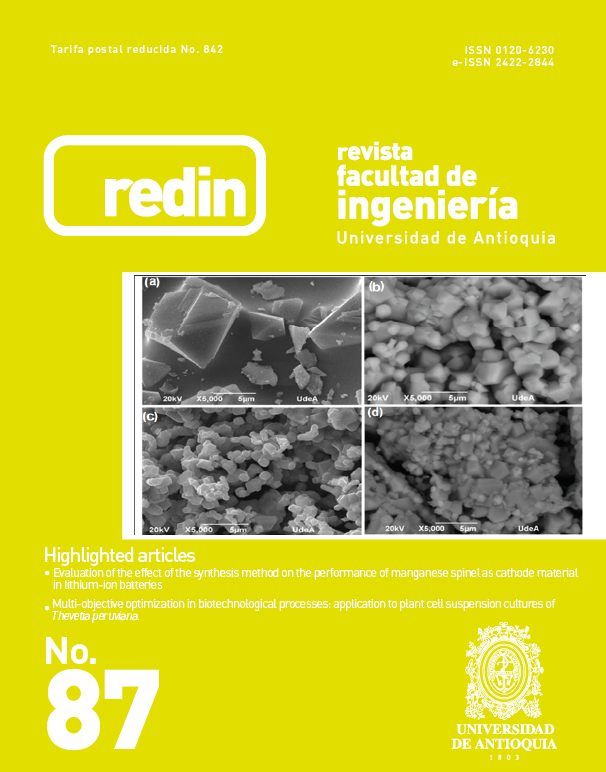Agrupamiento conceptual: un nuevo enfoque para el modelado del estudiante en Sistemas Tutoriales Inteligentes
DOI:
https://doi.org/10.17533/udea.redin.n87a09Palabras clave:
modelado del estudiante, sistemas tutoriales inteligentes, reconocimiento lógico combinatorio de patrones, inteligencia artificialResumen
El modelado del estudiante es un problema central en el diseño y desarrollo de los Sistemas Tutoriales Inteligentes. En este sentido, la característica que distingue este tipo de sistema es la capacidad de determinar con la mayor precisión y rapidez posible cuál es el estado cognitivo y afectivo-motivacional del estudiante para personalizar el proceso de enseñanza-aprendizaje. Por lo tanto, el problema fundamental está en seleccionar la estructura de datos para representar toda la información relativa al estudiante y elegir el procedimiento para realizar el diagnóstico. En este trabajo se describe un modelo para realizar la ingeniería del conocimiento inherente en todo Sistema Tutorial Inteligente utilizando el algoritmo de agrupamiento LC-conceptual del reconocimiento lógico combinatorio de patrones el cual además de construir los agrupamientos de objetos, basándose en la semejanza entre los mismos y utilizando un criterio de agrupamiento, construye la propiedad (el concepto) que cumple cada agrupamiento de objetos.
Descargas
Citas
D. A. Ovalle and J. A. Jiménez, “Entorno Integrado de Enseñanza / Aprendizaje basado en Sistemas Tutoriales Inteligentes Ambientes Colaborativos,” Sistemas, Cibernética e Informática, vol. 1, no. 1, pp. 23–27, 2004.
N. Martínez, M. M. García, and Z. Z. García, “Modelo para diseñar sistemas de enseñanza-aprendizaje inteligentes utilizando el razonamiento basado en casos,” Revista Avances en Sistemas e Informática, vol. 6, no. 3, pp. 67–78, Dec. 2009.
T. J. M. Bench, Knowledge Representation: An Approach to Artificial Intelligence, 1st ed. San Diego,USA: Academic Press, 1990.
C. Li and J. Yoo, “Modeling Student Online Learning Using Clustering,” in 44th annual Southeast regional conference, Melbourne, Florida, 2006, pp. 186–191.
K. Chrysafiadi and M. Virvou, “Student modeling approaches: A literature review for the last decade,” Expert Syst. Appl., vol. 40, no. 11, pp. 4715–4729, Sep. 2013.
D. Medina, N. Martínez, Z. Z. García, M. Chávez, and M. M. García, “Putting Artificial Intelligence Techniques into a Concept Map to Build Educational Tools,” in Nature Inspired Problem-Solving Methods in Knowledge Engineering. Berlin, Heidelberg: Springer Berlin Heidelberg, 2007, pp. 617–627.
J. Shulcloper, “Reconocimiento lógico combinatorio de patrones: teoría y aplicaciones,” M.S. thesis, Universidad Central de Las Villas, Santa Clara, Cuba, 2009.
N. Martinez, M. M. Garcia, and J. E. Hurtado, “Model for designing Intelligent Tutorials Systems using Conceptual Maps and knowledge-based Systems,” IEEE Latin America Transactions, vol. 10, no. 6, pp. 2301–2308, Dec. 2012.
Y. Reyes and N. Martínez, “La toma de decisiones en los Sistemas Tutoriales Inteligentes utilizando el agrupamiento conceptual,” Rev. Cuba. Cienc. Informáticas, vol. 8, pp. 104–116„ Dec. 2014.
D. Ovalle, “Análisis funcional de la estrategia de aprendizaje individualizado adaptativo,” Proy. Investig., Universidad Nacional de Colombia, Medellín, 2007.
J. F. Martínez, “Herramientas para la Estructuración Conceptual de Espacios,” M.S. thesis, CIC, IPN, México, 2000.
R. S. Michalski, “Conceptual Clustering: A Theoretical Foundation and a Method for Partitioning Data into Conjunctive Concepts,” in Textes des exposes du Seminaire organise par l’Institute de Recherche d’Informatique et d’Automatique (IRIA), París, France, 1979, pp. 254–294.
A. Rodriguez and G. Sánchez, “An Algorithm for Computing Typical Testors Based on Elimination of Gaps and Reduction of columns,” Aerosp. and Electron. Syst., vol. 27, no. 8, p. 18, Dec. 2013.
J. Martínez and A. Guzmán, “The logical combinatorial approach to pattern recognition, an overview through selected works,” Pattern Recognit., vol. 34, no. 4, pp. 741–751, Apr. 2001.
J. Plasencia, F. Marrero, M. Nicado, and Y. Aguilera, “Procedimiento para la priorización de Factores Críticos de Éxito,” DYNA, vol. 84, no. 202, pp. 26–34, Jul. 2017.
R. Likert, “A technique for the measurement of attitudes,” Arch. Psychol., vol. 22, no. 140, pp. 5–55.
Y. Reyes, N. Martínez, and M. M. García, “El agrupamiento conceptual en el contexto de la teoría de los conjuntos Aproximados,” DYNA New Technol., vol. 2, no. 1, p. 12, Jan. 2015.
Descargas
Publicado
Cómo citar
Número
Sección
Licencia
Derechos de autor 2018 Revista Facultad de Ingeniería Universidad de Antioquia

Esta obra está bajo una licencia internacional Creative Commons Atribución-NoComercial-CompartirIgual 4.0.
Los artículos disponibles en la Revista Facultad de Ingeniería, Universidad de Antioquia están bajo la licencia Creative Commons Attribution BY-NC-SA 4.0.
Eres libre de:
Compartir — copiar y redistribuir el material en cualquier medio o formato
Adaptar : remezclar, transformar y construir sobre el material.
Bajo los siguientes términos:
Reconocimiento : debe otorgar el crédito correspondiente , proporcionar un enlace a la licencia e indicar si se realizaron cambios . Puede hacerlo de cualquier manera razonable, pero no de ninguna manera que sugiera que el licenciante lo respalda a usted o su uso.
No comercial : no puede utilizar el material con fines comerciales .
Compartir igual : si remezcla, transforma o construye a partir del material, debe distribuir sus contribuciones bajo la misma licencia que el original.
El material publicado por la revista puede ser distribuido, copiado y exhibido por terceros si se dan los respectivos créditos a la revista, sin ningún costo. No se puede obtener ningún beneficio comercial y las obras derivadas tienen que estar bajo los mismos términos de licencia que el trabajo original.










 Twitter
Twitter